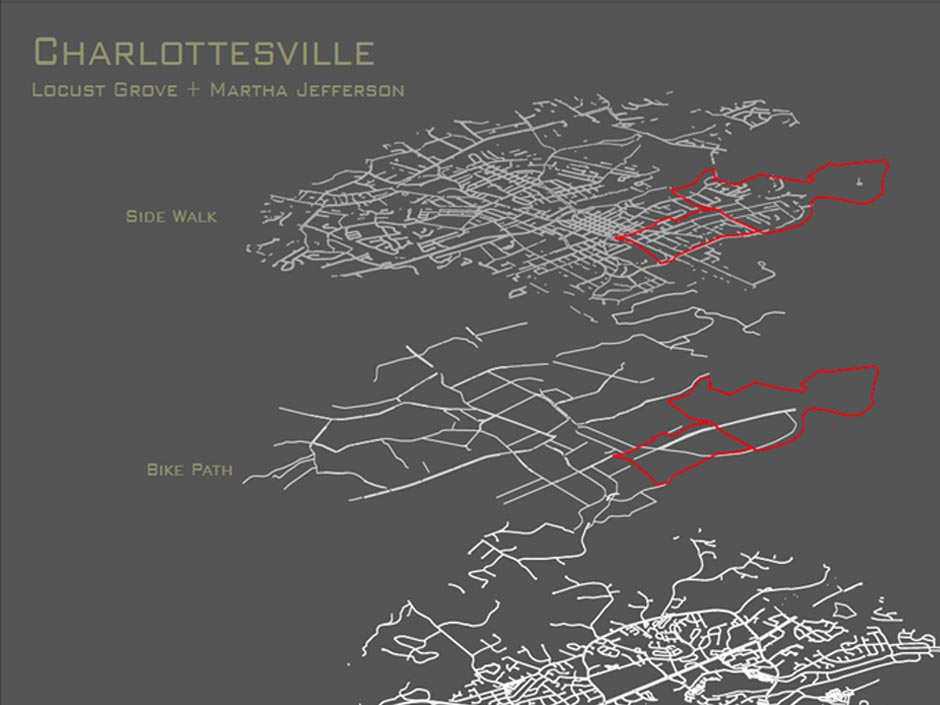Locust Grove and Martha Jefferson
SustainabilityofPlace_LocustGroveandMarthaJefferson (click PDF)
Spring 2013
Team members: Rachel Brondstater, Callum Gordon, Rob Manion, Monique Morales, Isabel Preciado
The objective of this project is to educate the neighborhoods of Martha Jefferson and Locust Grove about sustainability, provide them with information on how sustainable their neighborhoods already are, and point out where they are succeeding and where they are failing. In order to achieve this objective, our team chose 5 systems that are critical in determining how green and sustainable these neighborhoods really are. These 5 systems include: transportation, health and safety, green versus urban space, culture, and density.
The most important goal is to educate the community and do so in a way that fully encompasses the entirety of the neighborhoods we were presented with. In turn, we hope the project will encourage the rest of the community of Charlottesville to develop and construct under these sustainable standards in order to transform and keep the city of Charlottesville a green city.
These 5 systems have been taken, researched and thoroughly analyzed in the context of both the Martha Jefferson and Locust Grove neighborhoods and compared between the two to determine the more efficient system. However, if we discovered that a system was lacking in both neighborhoods we brought in an outside precedent to compare with. These are places that we believe are great examples of what is a sustainable place based on the criteria of our systems.
In terms of transportation we researched accessibility to public transportation, walkability of the neighborhoods, parking distribution, street layout and bike paths. Then the Health and safety section deals with crime, the distance these neighborhoods are located from police stations, hospitals and fire stations. Third, the Green spaces capture the utilization of the land with respect to potential community engagement, and how future developments can contribute to the sustainability of the neighborhoods. Then, the cultural and public aspects of the neighborhoods are explored as well as the “green areas” of the neighborhoods. Density reveals interesting demographics of Martha Jefferson and Locust Grove and looks at pillars that can be used to make the neighborhoods more sustainable through density.

